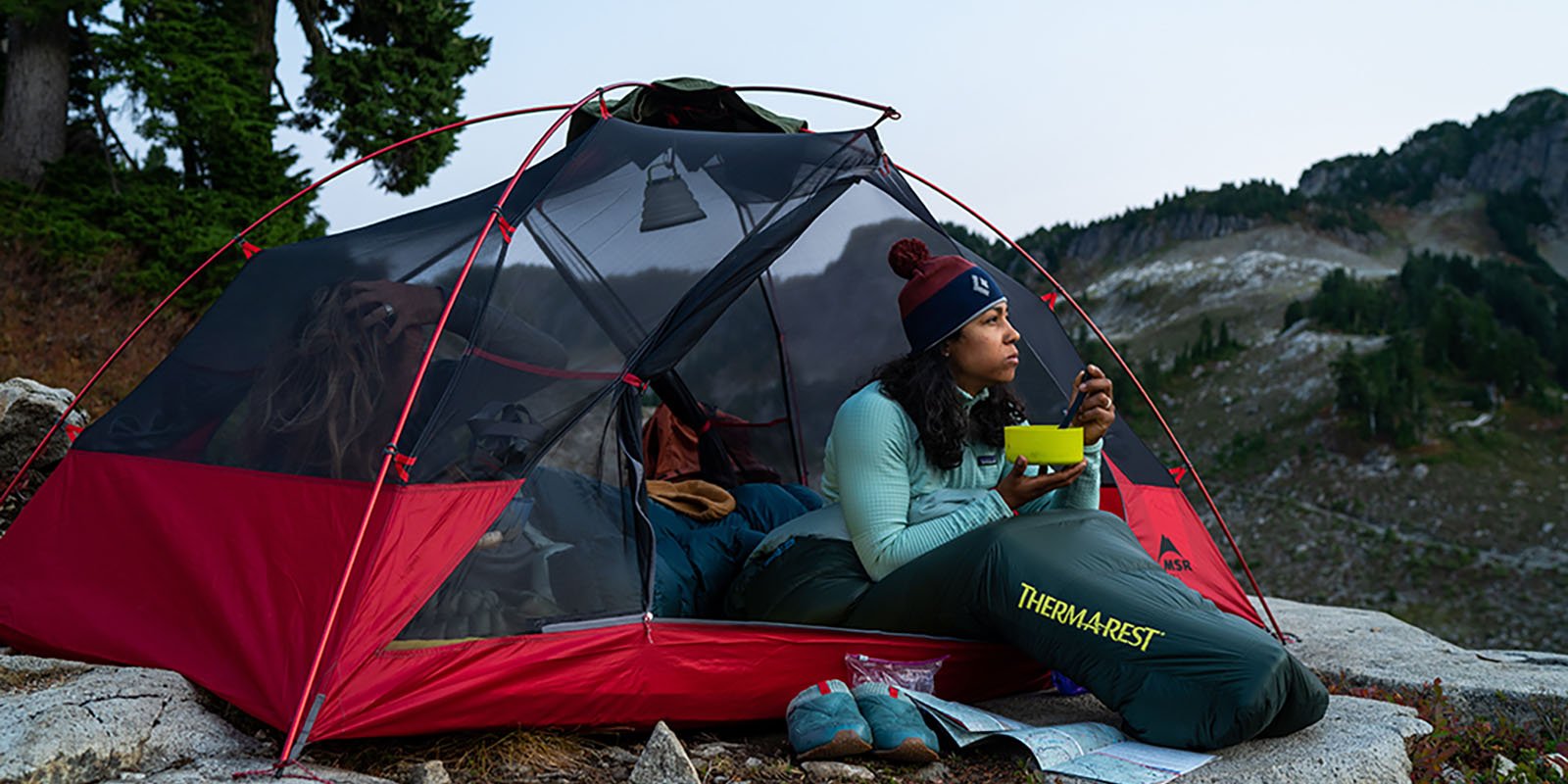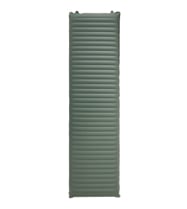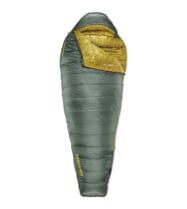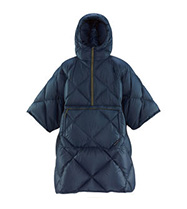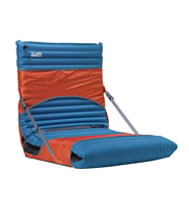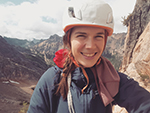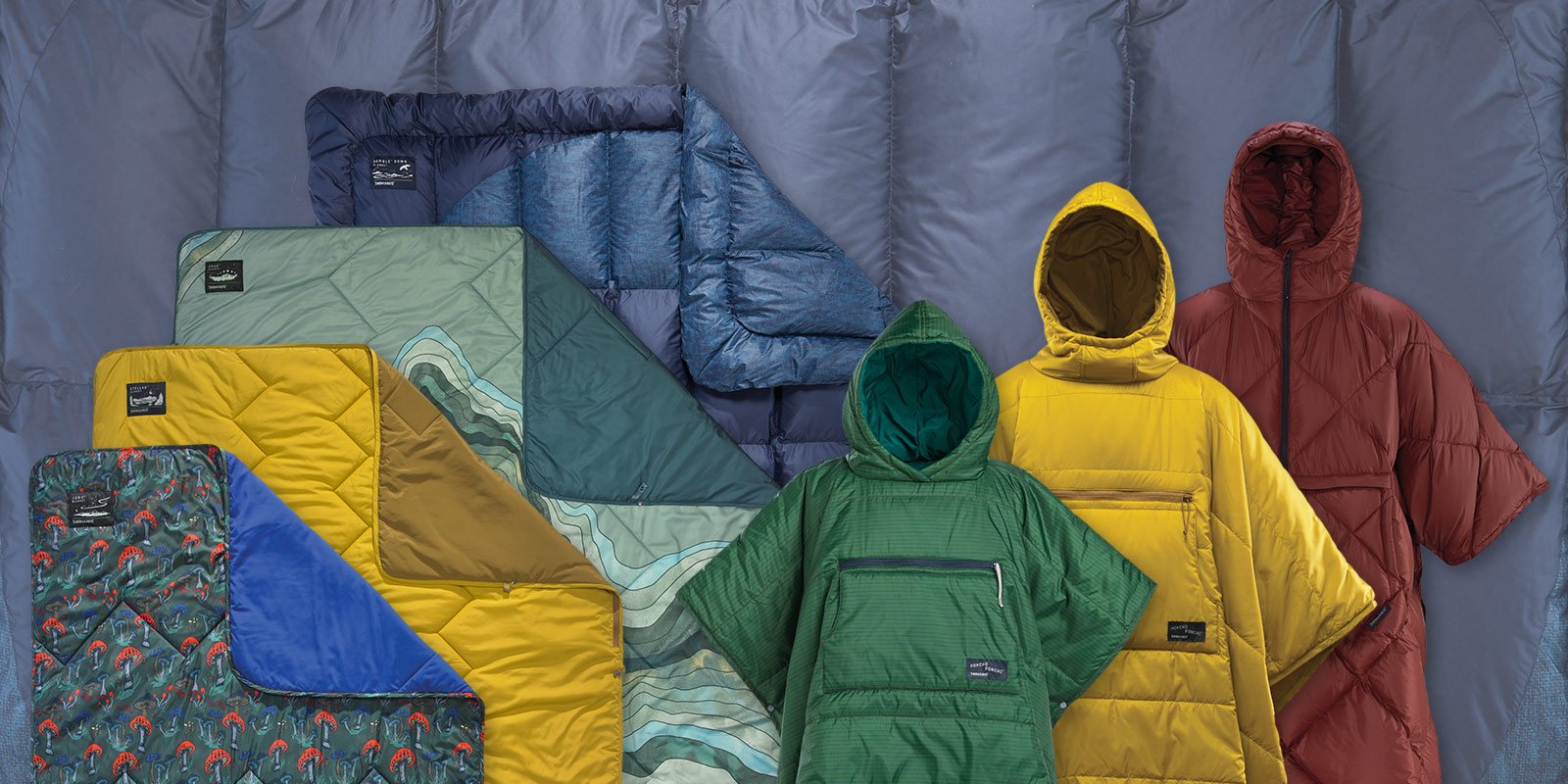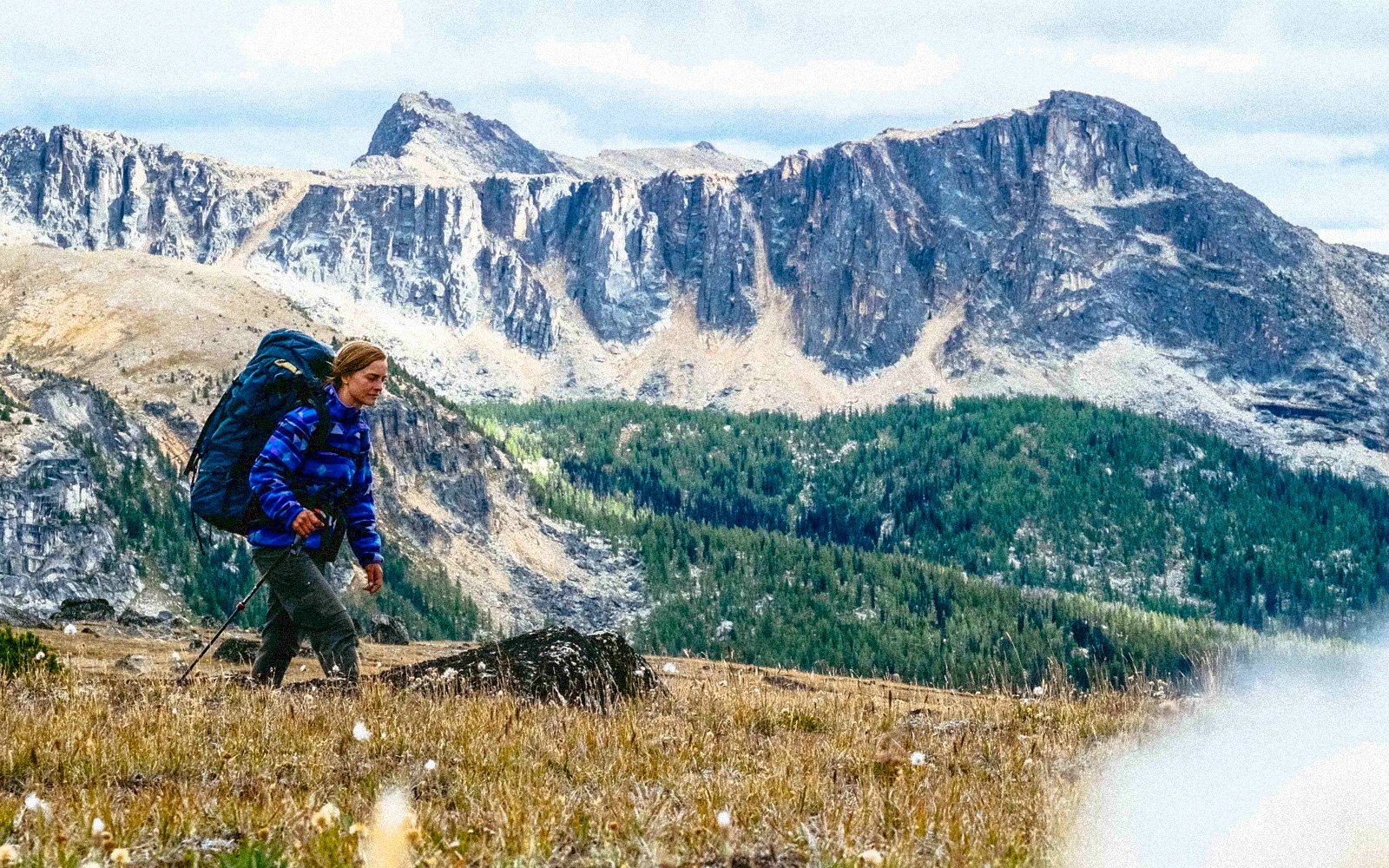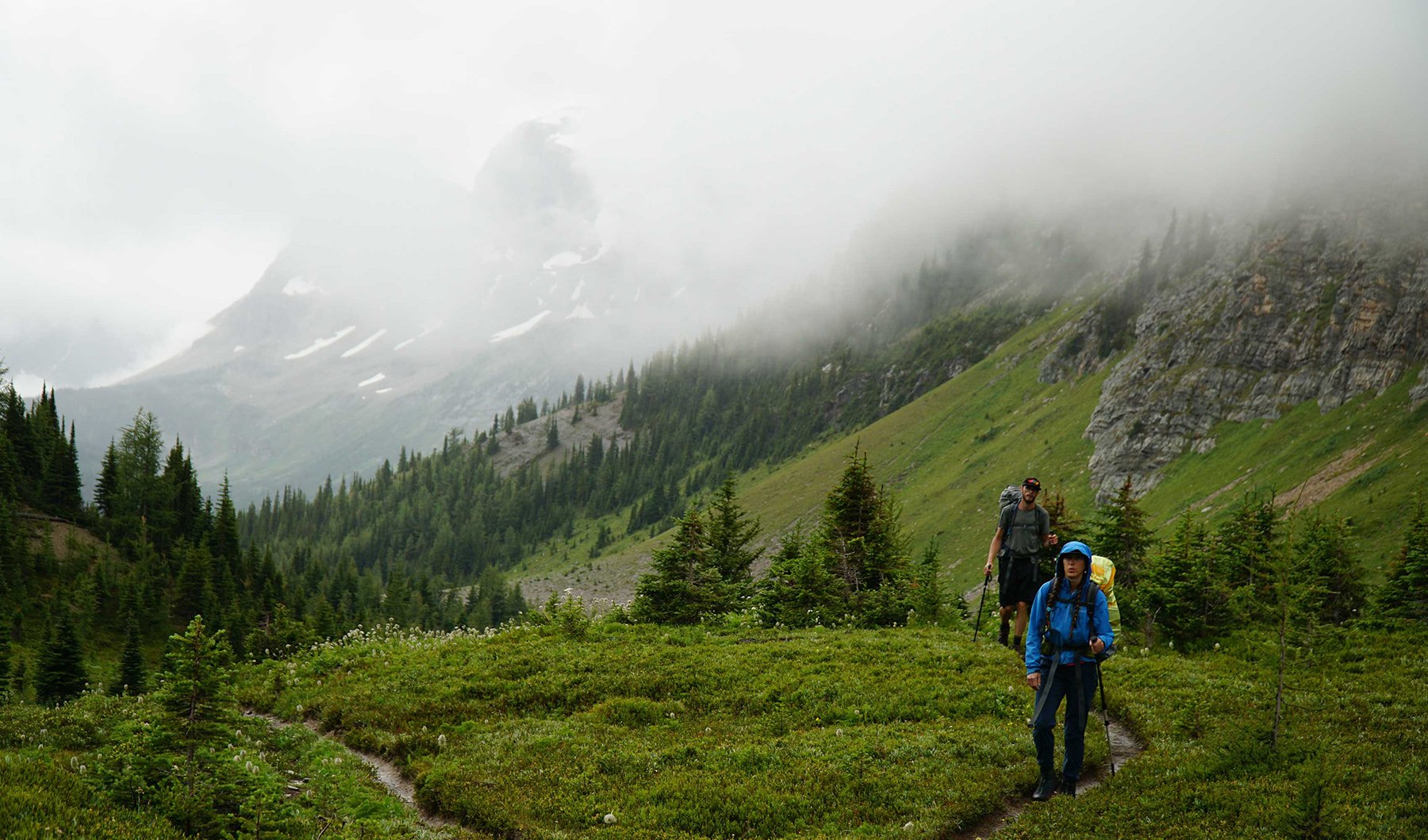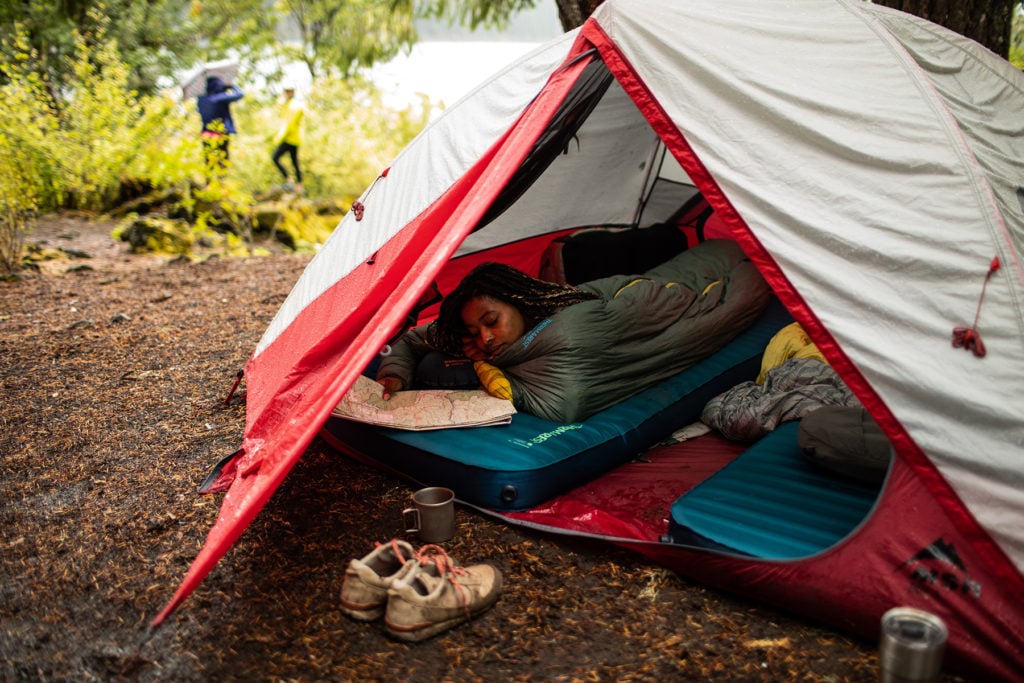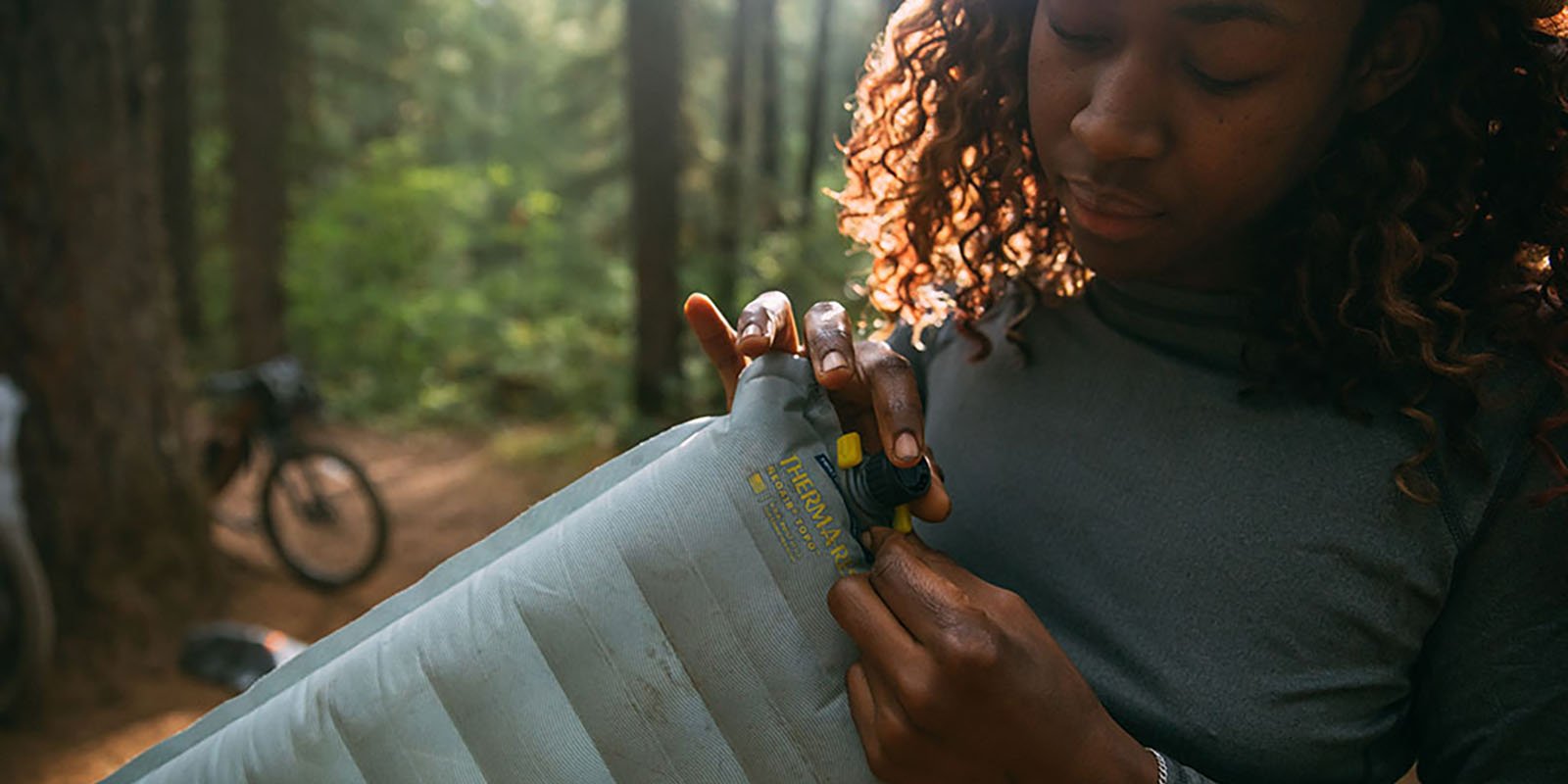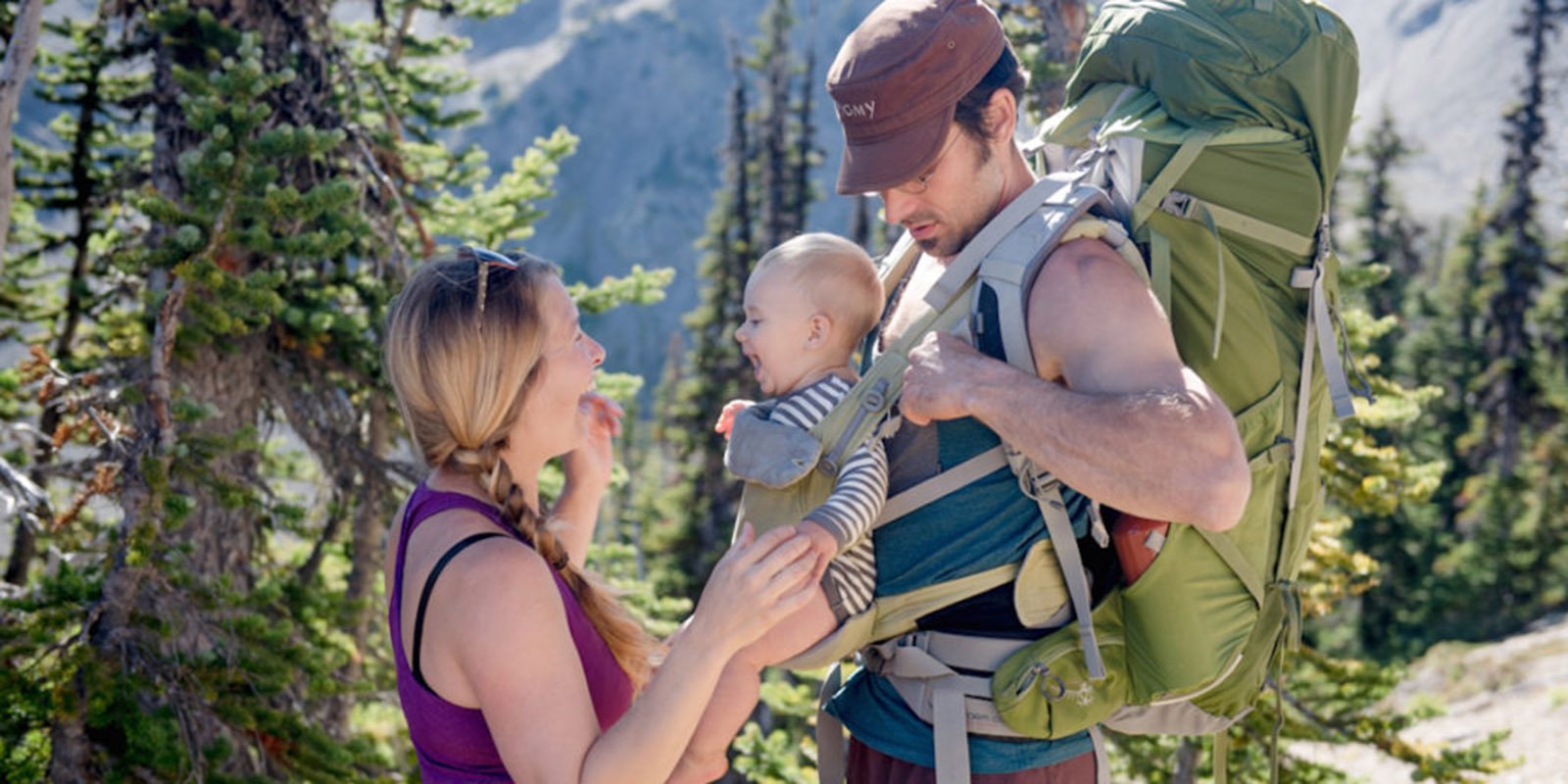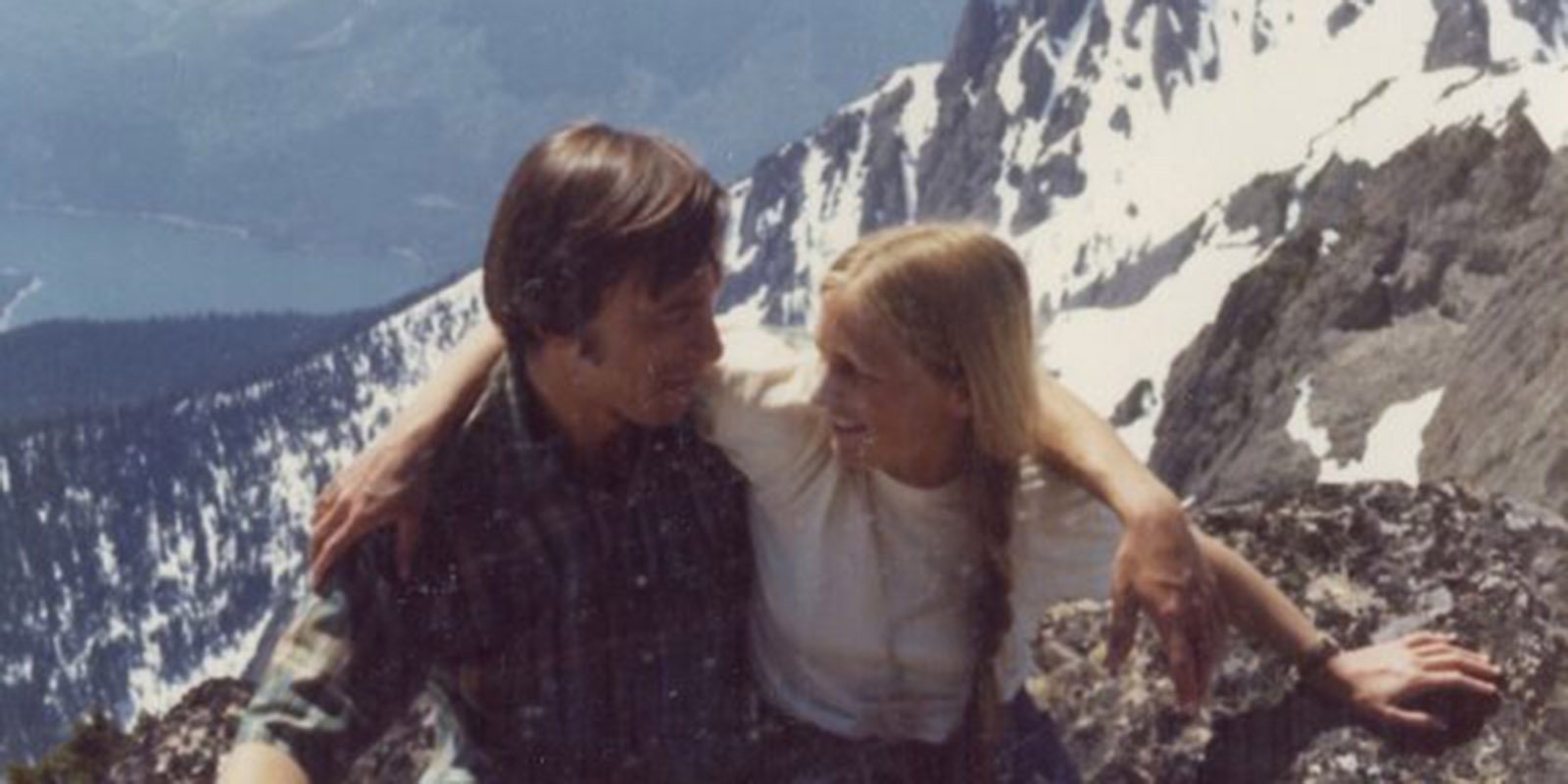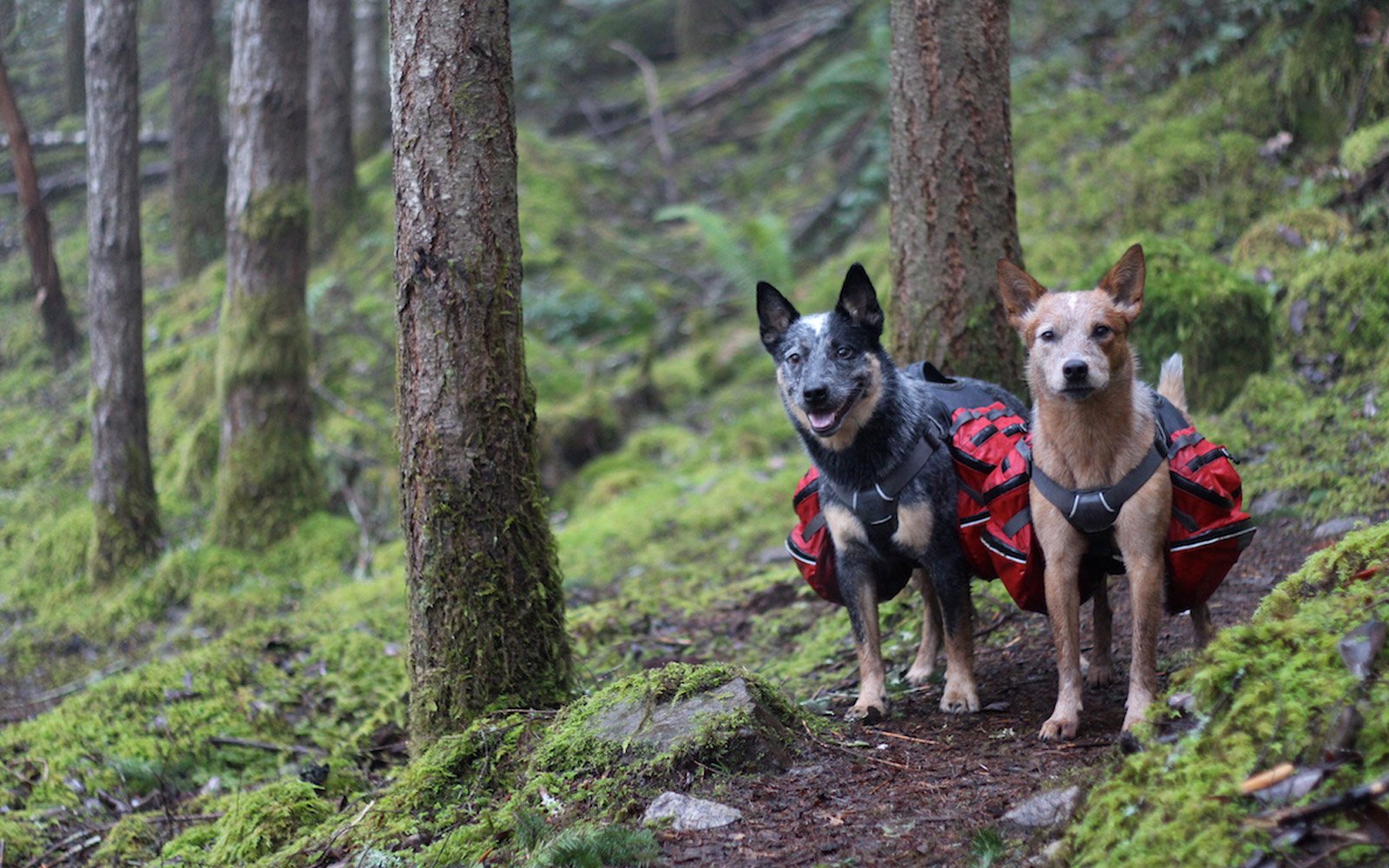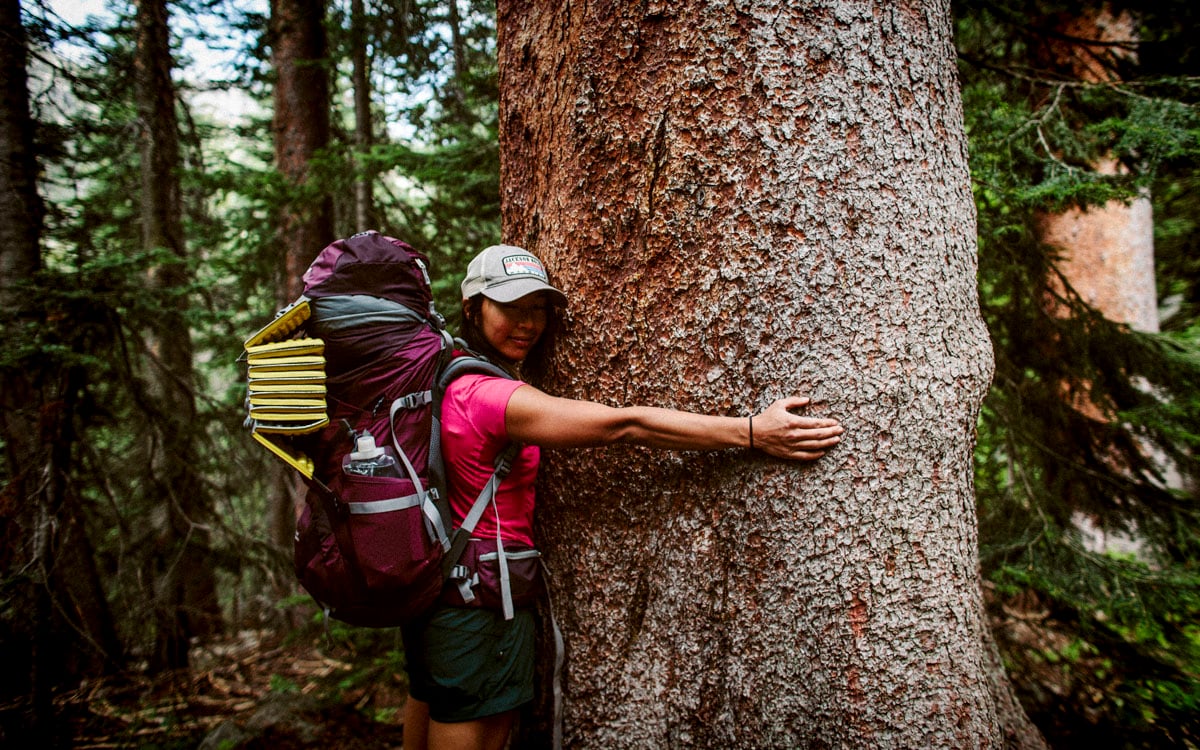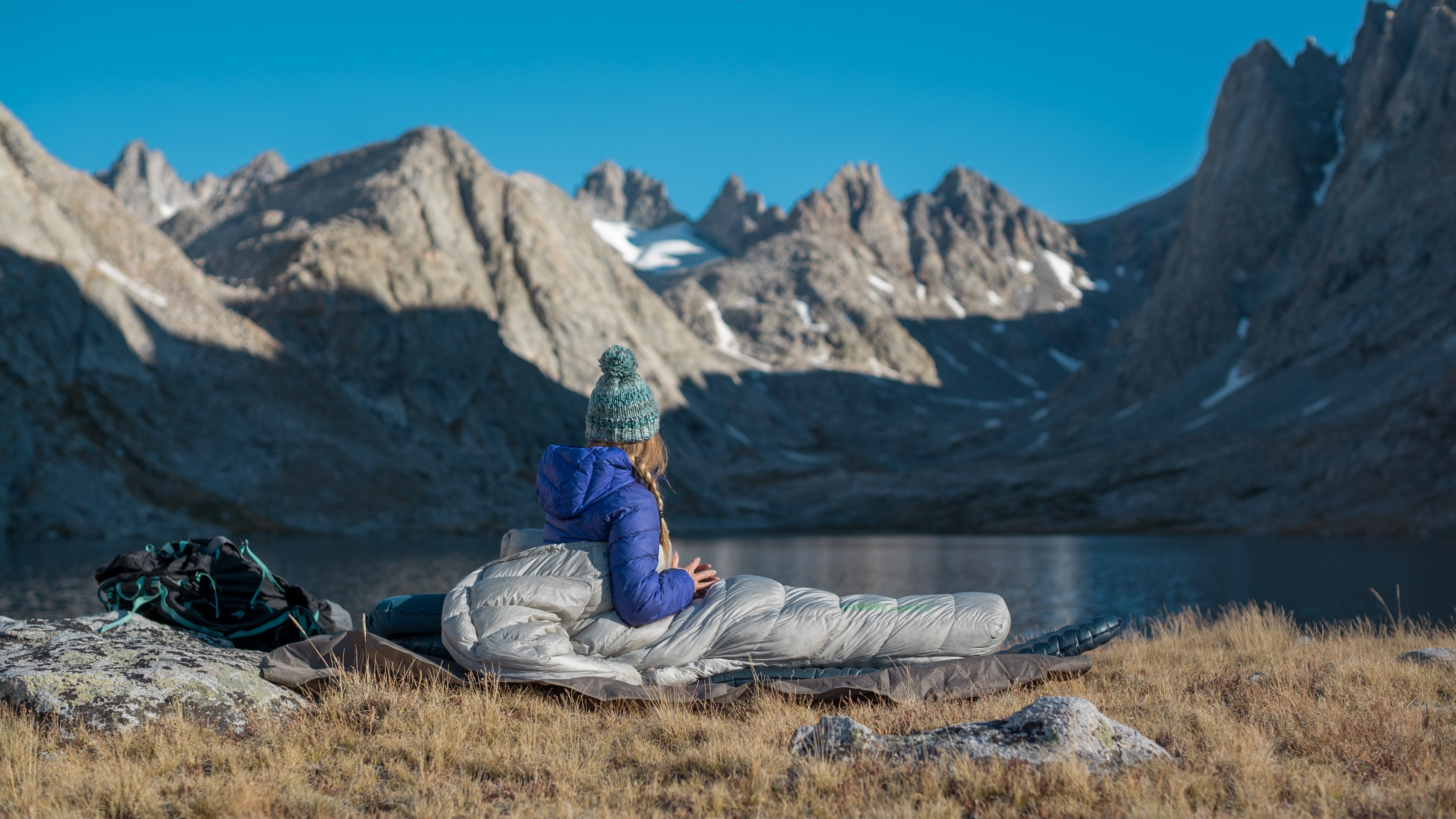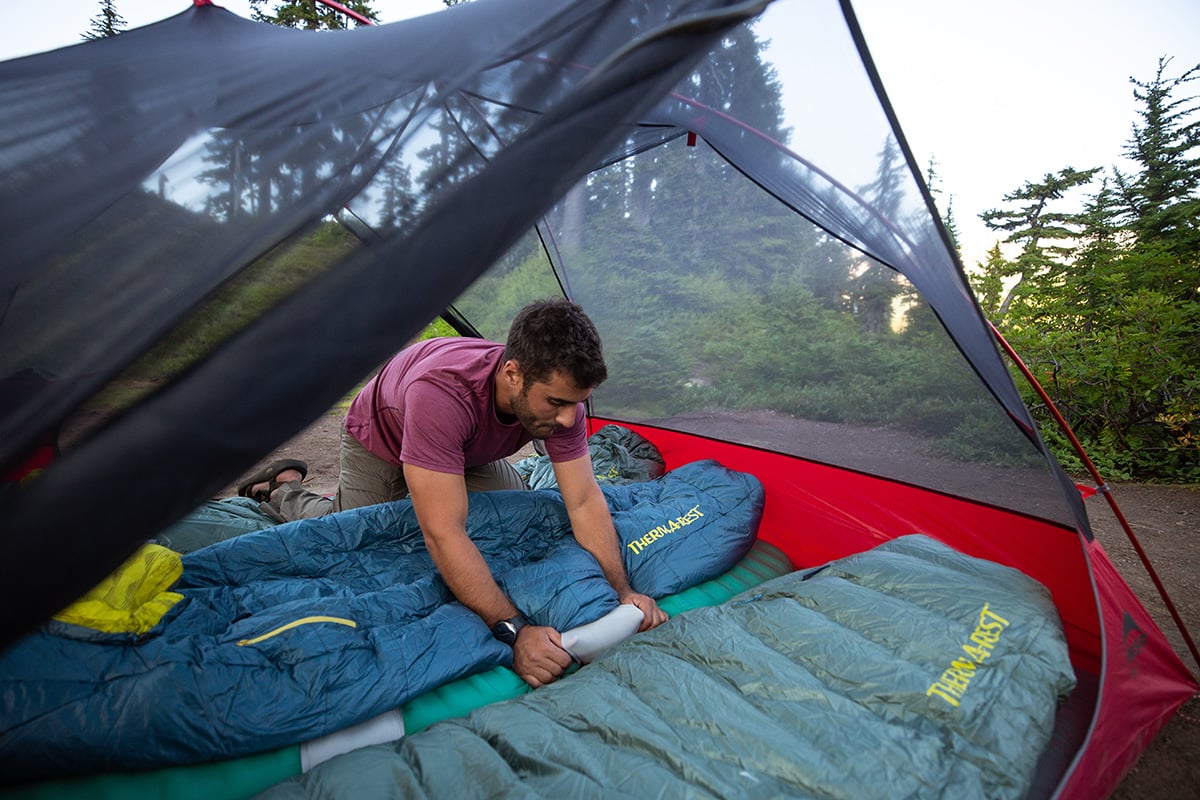We get it – light and fast backpacking is all the rage. It seems like all we hear about these days is thru-hiking, section hiking and fastest known times. We understand that sacrificing a bit (or a lot!) of comfort can get you from point A to point B more efficiently, but on some trips that’s not what it’s all about. This season, slow and comfortable backpacking deserves a comeback. Head into the mountains with your crew for the weekend just to spend time together and play outside. Sure, you could cut the end off of your toothbrush and only eat bars for dinner, but have you tried actually enjoying your backpacking trip? Here’s our case for carrying a few extra ounces, even if they lead to pounds.
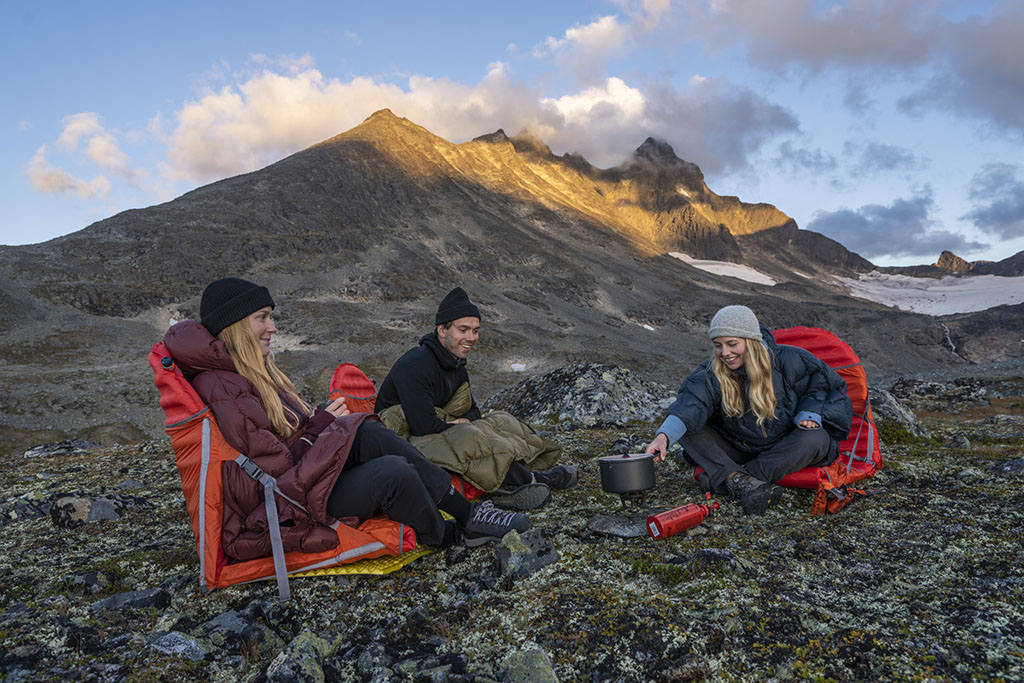
Hike Less and Chill More
On some trips, the goal may be to get way off of the beaten path or cover a lot of ground. While there’s a time and place for that, hiking a shorter distance to a beautiful backcountry camp is an equally valid way to enjoy the outdoors. With shorter hiking days, you’ll have more time to stop and smell the wildflowers. Who likes walking anyway? We all know it’s really about the destination not the journey when your pack is the size of a small child.
To enhance the mountain lounging, we love to pack a few extras to create a cozy camp. Lightweight camp chairs are on top of the list. Take a load off and relax in a foldable chair after setting up, or even just bring a Trekker Chair that turns your mattress into seat. You can even have your cake and eat it too with an ultralight Z-seat and never worry about where to sit. Camping in the forest? A packable hammock is a great addition to your comfortable and slow backpacking scene; string it up between two sturdy trees and enjoy an afternoon nap under the pines.
Maybe your trip aligns with prime mosquito hatching season. Even with the most jaw-dropping alpine backdrop, mealtime is no fun with flying pests buzzing in your ears. Packing a lightweight bug tent could make or break your camp experience. Perhaps a light drizzle is forecasted during the evening of your planned overnight. Rather than bagging the trip, add a tarp to your packing list. Misty mountain views can add to the allure when you have some rain protection for cooking.
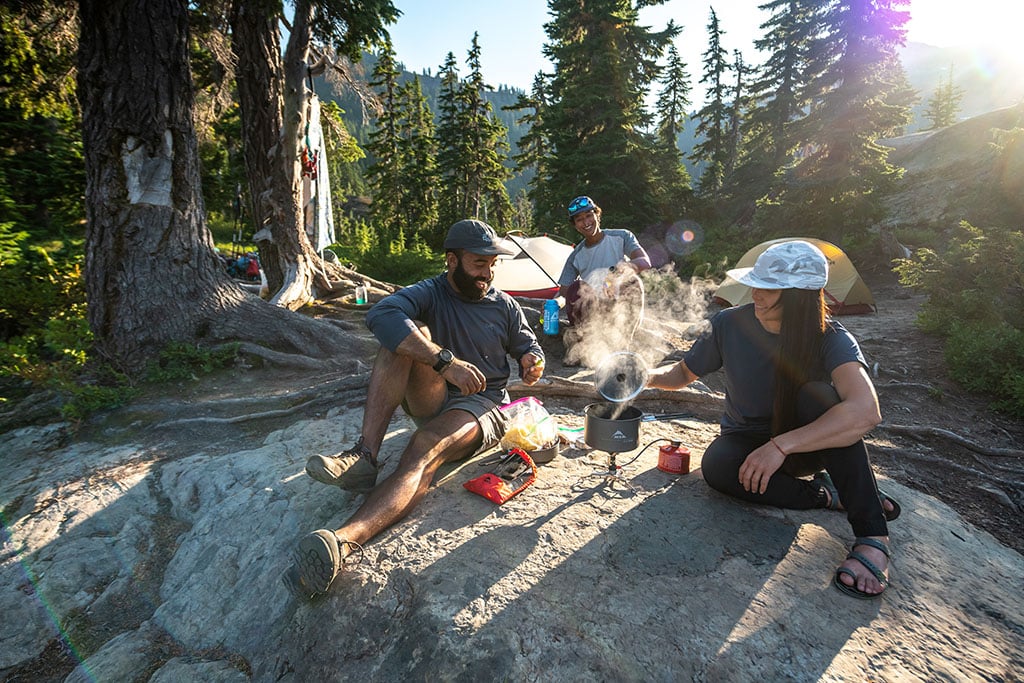
Make Cooking Part of the Experience
Did you know there are entire cookbooks dedicated to backcountry cuisine? Mealtime in the mountains is a great chance to connect with your companions, enjoy where you are, and reflect on the day. Instead of choking down dry granola bars, dreaming up a delicious menu with your group can make a backpacking trip even more enjoyable.
And we’re not talking about freeze-dried dinners here. It’s possible to make simple, but tasty meals like burritos, alfredo, and even falafel in the great outdoors with ingredients found at a regular grocery store.. We also think fresh veggies are underrated in the backcountry. Adding a little onion and broccoli to your pasta at the end of a long hiking day can be a game changer, and these ones keep well for a few nights on the trail. A lightweight backpacking stove like the MSR Whisperlite works well when cooking more elaborate meals for larger groups.
If you want to take it to the next level, try your hand at backcountry baking. Using a fry-bake pan, a backpacker’s oven, or a fire (be sure to check burn bans!), you can enjoy treats like calzones, bagels, and brownies. Your only limitation is your imagination, and perhaps some patience. Pair a batch of cinnamon rolls with some freshly brewed coffee for a perfect morning in the hills.
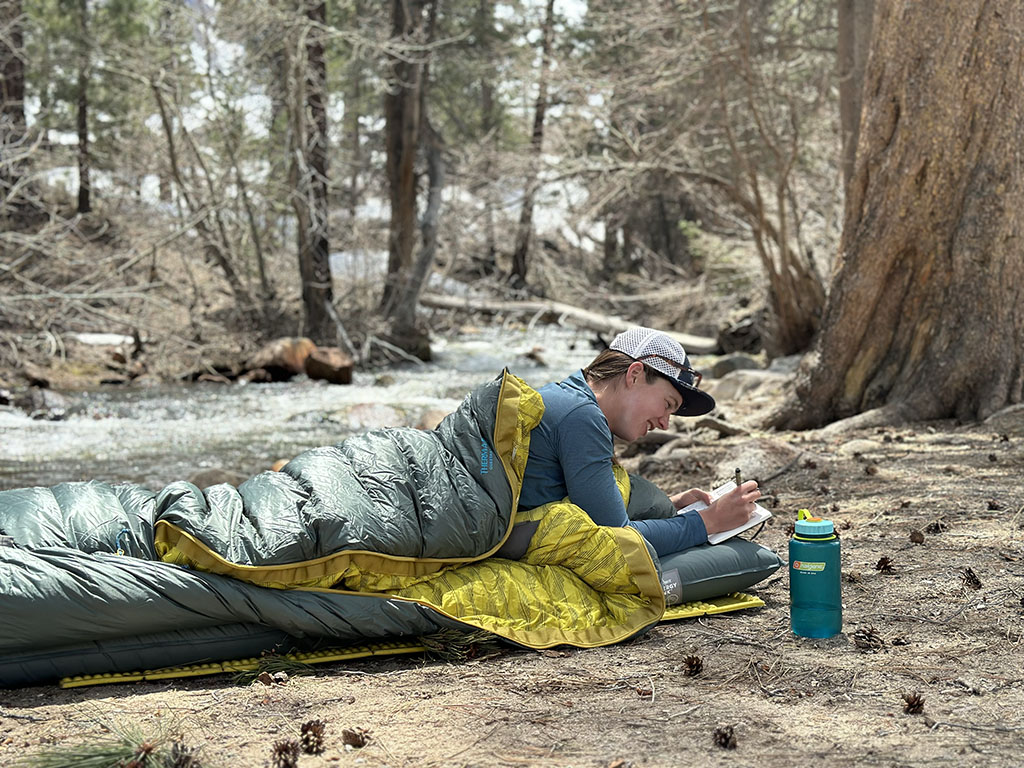
No Television? No Problem!
Shorter hiking days leave more down time to hang at camp. On a comfortable and slow backpacking trip, we like to bring a few extra activities so we never get sick of those monotonous mountain views.
If you’re looking for a little solo time, packing a book or field guide might be worth the weight. Some backcountry travelers swear by the Kindle, since it’s relatively light and offers access to an entire library of options. You can also let nature bring out your artistic side with a watercolor travel kit. Picture an afternoon relaxing next to an alpine lake, mixing colors to match the carpet of wildflowers around you, and you’ll never plan a 30-mile hiking day again.
For a more social trip, a deck of cards or lightweight travel games go a long way. On rainy backpacking trips, I’ve happily spent entire days in a tent competing in multi-hour speed Scrabble tournaments. No need to pack a Scrabble board; the wooden blocks are lighter than ceramic Bananagram tiles, and you can play with the same rules. Divide up a couple games among your group, and you won’t add too much extra weight to your own pack.
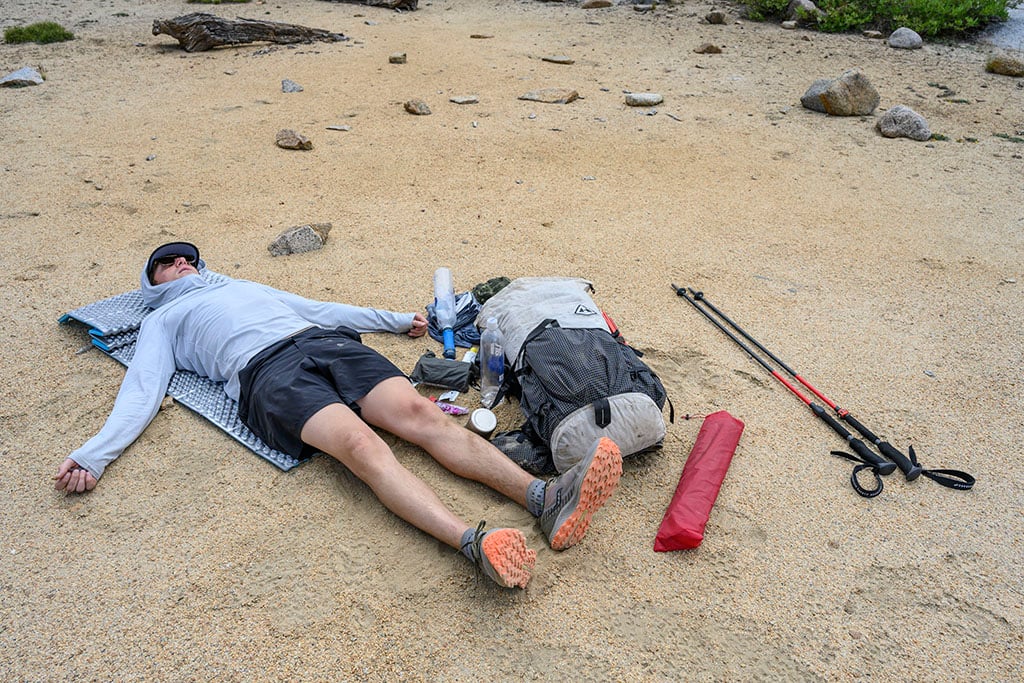
Be prepared for anything
Worried about bear encounters, twisted ankles, or broken tent poles? These backcountry challenges are no match for your ten heaviest essentials. Putting together a solid repair kit, first aid kit, and emergency response tools are important steps for any mountain traveler. Pairing these kits down to match the commitment level of your trip can help when you’re actually trying to log miles.
A good repair kit matches the gear you are bringing with you. Some MSR stoves are sold with their own repair kit; make sure you know how to use it before you’re in the field! Pole splints that work with your specific tent and patches that match the fabrics of your tent fly or sleeping pad are other key items. Other general items could include duct tape or tenacious tape, zip ties, seam seal, and a multi-tool.
First aid kits and emergency response tools can also be paired to the type of trip you’re planning. While every kit should include life-saving tools to stop bleeding fast, call for help, or reverse an allergic reaction, you may pack a beefier blister kit for long hiking days. Or perhaps you’ll add bear spray for trips in grizzly bear habitat. The more time you spend out in the elements, the more you can tailor your kits to your needs.
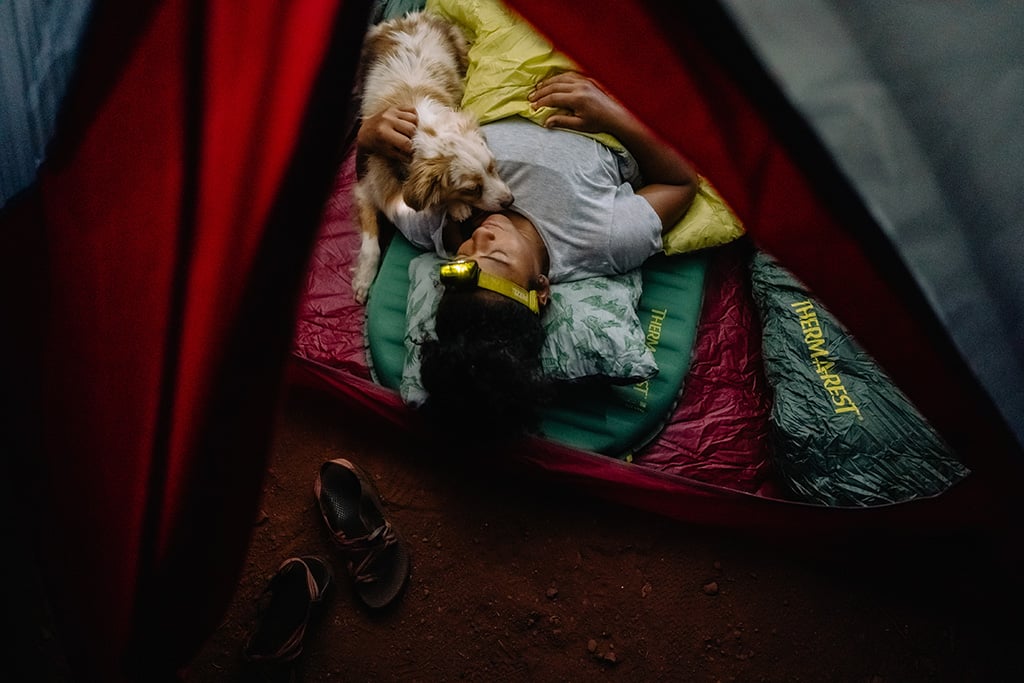
Don’t Sacrifice a Good Night’s Rest
A sleeping pad the size of your palm is pretty cool, but how comfortable can it really be? With supreme comfort and surprising packability, the award winning NeoAir® Topo Luxe™ pad offers the best of both worlds. Just a little bigger than a Nalgene bottle when deflated and rolled up, the Topo Luxe inflates into a mega, four inch pad. With an R-Value of 3.7, you’ll be comfy on weekend trips during the shoulder seasons as well as mid-summer.
Therm-a-rest’s Questar 20F sleeping bag; it even has connection straps to integrate it with your pad. Loaded with 650 fill hydrophobic down, the Questar will stay cozy and warm even if you face some adverse weather conditions. Side sleepers will love the fit of this bag, which is designed to accommodate multiple sleep positions. Don’t forget your camp pillow! With a model that packs down to the size of your fist, we think an inflatable pillow is almost always worth the weight.
The beauty of a comfortable and slow backpacking trip? There’s no need to set an alarm. Wake up when the sunlight filters through the bug mesh and stay snuggled into your cozy sleep system as the sun illuminates the peaks around you.
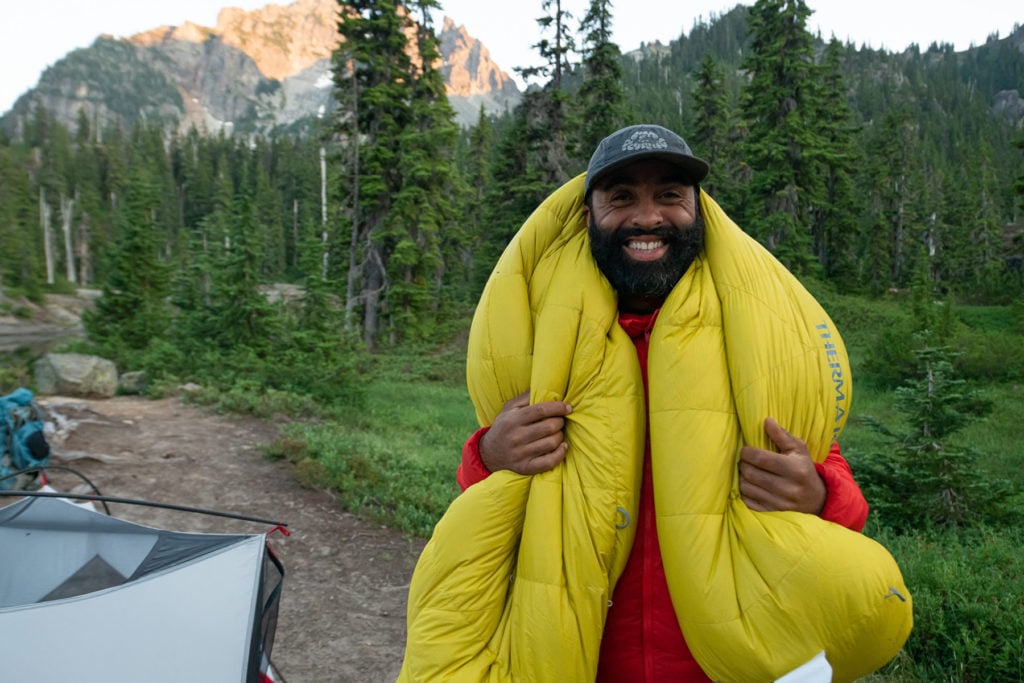
Return With a Full Heart and Thighs of Steel
While we’re psyched to hear stories about mountain athletes pushing the envelope, we also love simply spending time with friends in the outdoors. Unplugging for the weekend and heading to the hills can be the best antidote to life’s daily stress. Pick and choose from the creature comforts above to customize the experience for your crew, or dream up a luxury backpacking experience of your own.
An added bonus to the slow and comfortable backpacking trip? You can skip your next leg workout at the gym after walking uphill for a few days with a sixty pound pack. Follow these steps and come home with a full heart and thighs of steel.
Related Posts:
